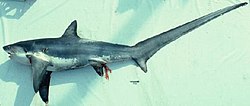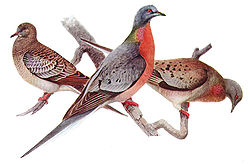| Yorktown Formation | |
|---|---|
| Stratigraphic range: Early to Middle Pliocene, | |
 Outcrop of the Yorktown Formation at Carters Grove Bluffs along the James River | |
| Type | sedimentary |
| Unit of | Chesapeake Group |
| Sub-units | Sunken Meadow Member, Rushmere Member, Morgarts Beach Member, Moore House Member, Tunnels Mill Member |
| Underlies | Croatan Formation |
| Overlies | Eastover Formation, Pungo River Formation |
| Lithology | |
| Primary | Sandstone, claystone |
| Other | shells |
| Location | |
| Region | Atlantic Coastal Plain of North America |
| Extent | Maryland, Virginia, North Carolina, South Carolina |
| Type section | |
| Named for | Yorktown, Virginia |
| Named by | Clark and Miller, 1906 [1] |
The Yorktown Formation is a mapped bedrock unit in the Coastal Plain of Maryland, Virginia, North Carolina and South Carolina. It is overconsolidated and highly fossiliferous.












































